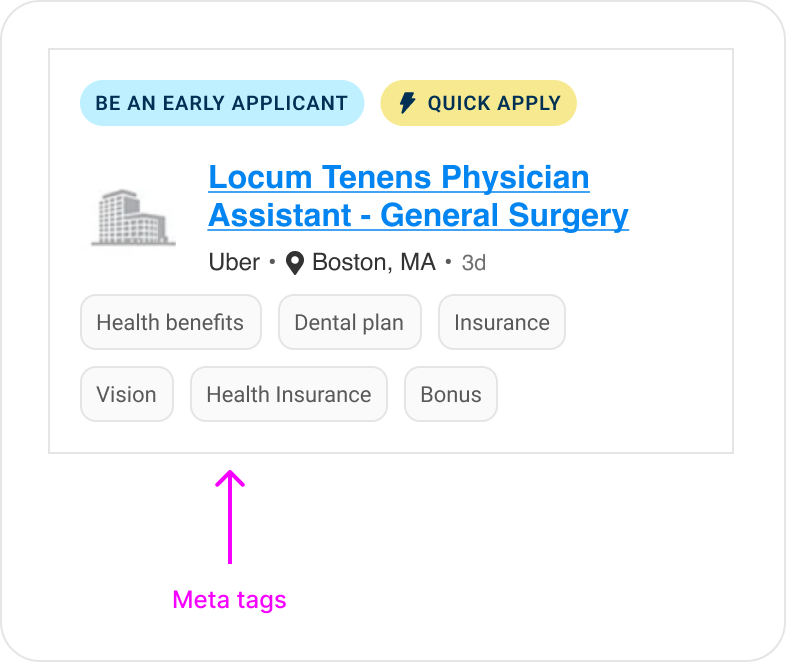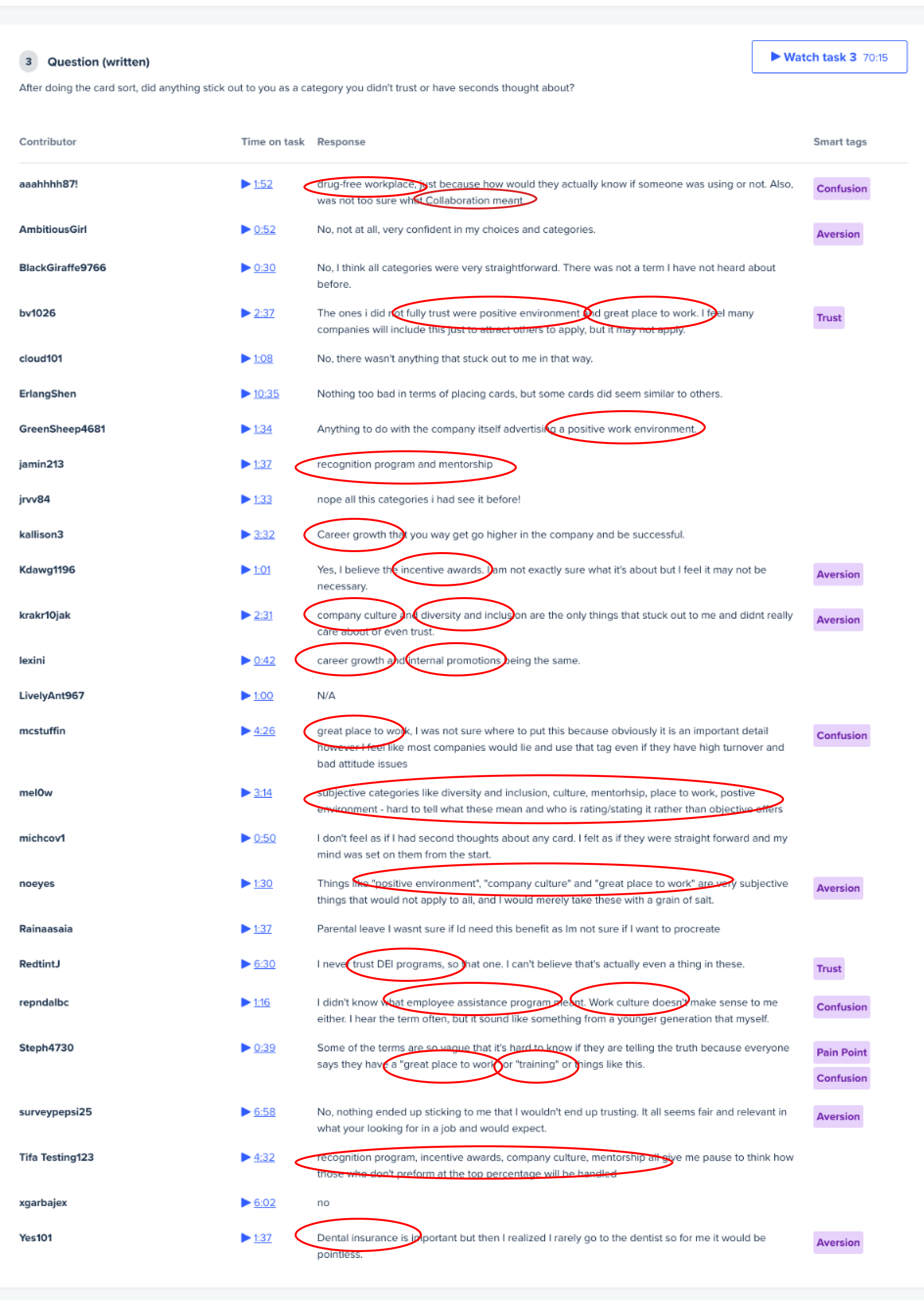Objective
The main objective of this study is to explore job seekers' preferences regarding the benefits they prioritize on job listings. Using an LLM-driven model, our aim is to enhance the presentation of information on job listings to better match user priorities and simplify their decision-making process. We aim to utilize this qualitative data to optimize the algorithm for how the LLM parses job descriptions and improve performance efficiency.
Methodology
The study employed a card sorting activity, a behavioral technique that observes how participants organize information based on their understanding and preferences. This method helps uncover the mental models of users, indirectly reflecting their attitudes towards different types of information.
Audience Profile
I tested the following demographic:
- Overworked and over it: Hourly workers, gig, and contract employees earning between $25k and $56k.
- Industries: Entertainment, Warehouse, Hotel, Food Service, Retail.
- Education: GED or Associate's Degree.
- General outlook: Cynical views on work, entry-level positions, and shaped by previous negative work experiences.
- Career Path: Yet to find a sustainable career path.
Key Findings
Participants were asked to rate benefits in three categories:
1. Most important to me on a job card.
2. Somewhat important to me on a job card.
3. Least important to me on a job card.

Card Sort Results (n~25 participants):

Top Priorities:
- Health Insurance and Paid Time Off:
88% of participants ranked these as most important, highlighting the critical value placed on health benefits and work-life balance.
Important Considerations:
- Sick Leave, Dental Insurance, Job Stability, Promotions, Career Growth, and Training: Over 60% rated these as crucial, showing a strong preference for job security and opportunities for personal development.
Moderate Importance:
- Sign-on Bonuses, 401(k) Plans, and Equal Opportunity: These were moderately important, significant to many but not deal-breakers.
Lower Importance:
- Mentorship and Diversity: Less critical, with 36% not prioritizing these.
Least Important:
- Recognition, Assistance Programs, and Employee Discounts:
Deemed least important by participants.
In essence, health benefits and time management stand out as paramount, with personal growth opportunities following closely. Perks like recognition, company culture, and diversity, equity, and inclusion (DEI) are less influential in job decisions.
Insights on Distrust and Second Thoughts
After the card sort, participants shared categories they found untrustworthy or had second thoughts about:
Here are some of the pull quotes:


Frequently Called-Out Topics:
-Positive Environment: Most mentioned topic, with six mentions.
- Company Culture & Diversity: Four mentions.
- Recognition & Mentorship: Three mentions.
- Career Growth and Incentive Awards: Two mentions each.
Least Mentioned Topics: Drug-Free Workplace, Collaboration, DEI Programs, Employee Assistance, and Work Culture: Each with one mention.
Common Areas of Confusion or Skepticism
- Collaboration Unclear about its specific meaning and relevance.
- Employee Assistance Program: Uncertain about the support it includes.
- Equal Opportunity: Unsure of its practical application.
- Community Involvement: Liked but questioned its meaning.
- Company Culture and Positive Environment: Questioned authenticity and exact meaning.
- Parental Leave, Job Stability, Great Place to Work, and Meal Discount: Not always relevant or viewed skeptically due to perceived clichés or lack of clarity.
Conclusion
The study provides valuable insights into the preferences and priorities of job seekers regarding job card benefits and what should be displayed first. These results also focused the engineering team on pivoting away from leading with intangible benefits first or testing to remove them altogether. Additionally, it helped to reframe internal debates and assumptions about what users are interested in. By understanding these preferences, we can better tailor job cards to meet user needs, enhancing their relevance and simplifying the decision-making process for job seekers.

